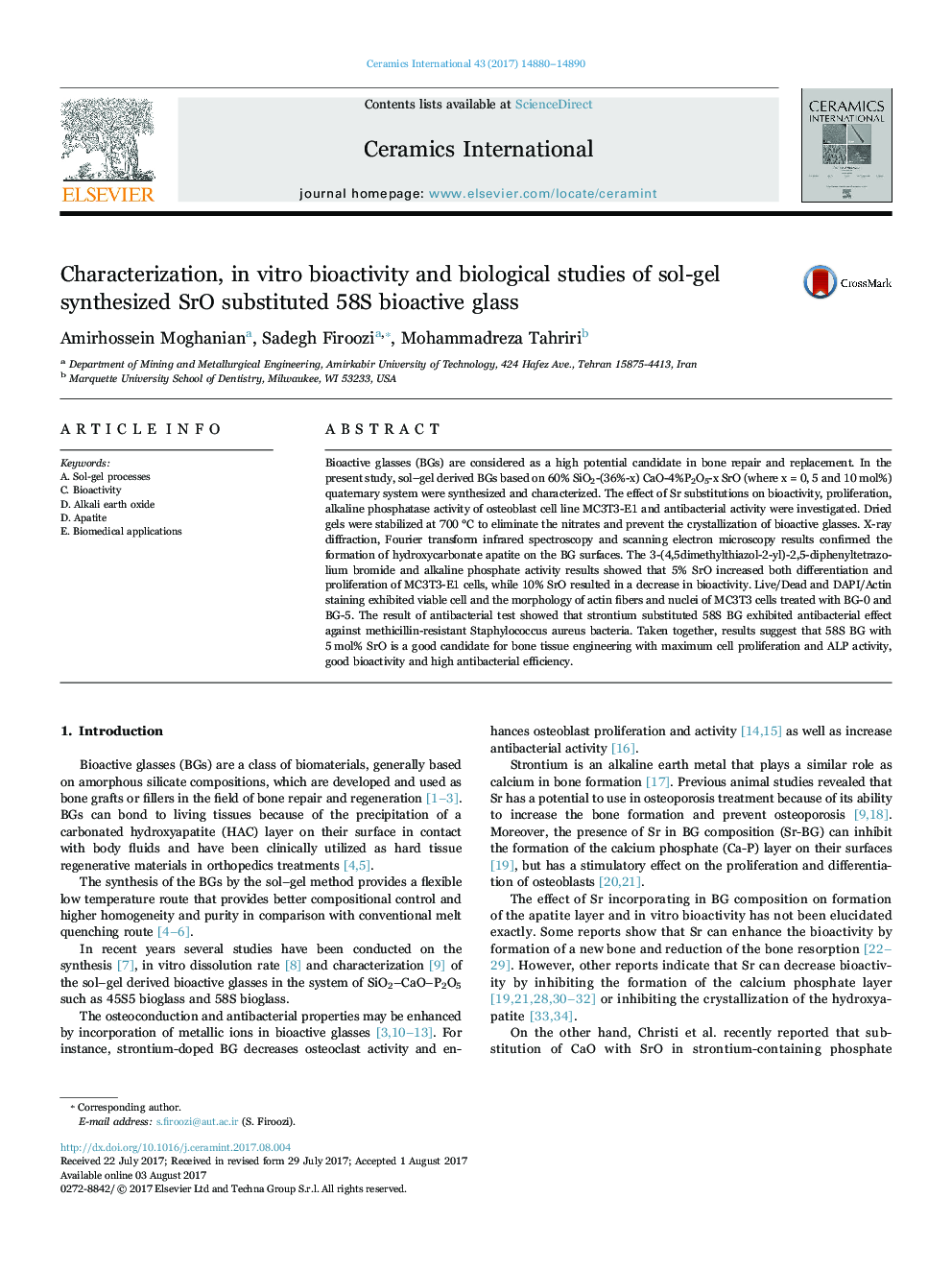| Article ID | Journal | Published Year | Pages | File Type |
|---|---|---|---|---|
| 5437371 | Ceramics International | 2017 | 11 Pages |
Bioactive glasses (BGs) are considered as a high potential candidate in bone repair and replacement. In the present study, sol-gel derived BGs based on 60% SiO2-(36%-x) CaO-4%P2O5-x SrO (where x = 0, 5 and 10 mol%) quaternary system were synthesized and characterized. The effect of Sr substitutions on bioactivity, proliferation, alkaline phosphatase activity of osteoblast cell line MC3T3-E1 and antibacterial activity were investigated. Dried gels were stabilized at 700 °C to eliminate the nitrates and prevent the crystallization of bioactive glasses. X-ray diffraction, Fourier transform infrared spectroscopy and scanning electron microscopy results confirmed the formation of hydroxycarbonate apatite on the BG surfaces. The 3-(4,5dimethylthiazol-2-yl)-2,5-diphenyltetrazolium bromide and alkaline phosphate activity results showed that 5% SrO increased both differentiation and proliferation of MC3T3-E1 cells, while 10% SrO resulted in a decrease in bioactivity. Live/Dead and DAPI/Actin staining exhibited viable cell and the morphology of actin fibers and nuclei of MC3T3 cells treated with BG-0 and BG-5. The result of antibacterial test showed that strontium substituted 58S BG exhibited antibacterial effect against methicillin-resistant Staphylococcus aureus bacteria. Taken together, results suggest that 58S BG with 5 mol% SrO is a good candidate for bone tissue engineering with maximum cell proliferation and ALP activity, good bioactivity and high antibacterial efficiency.
